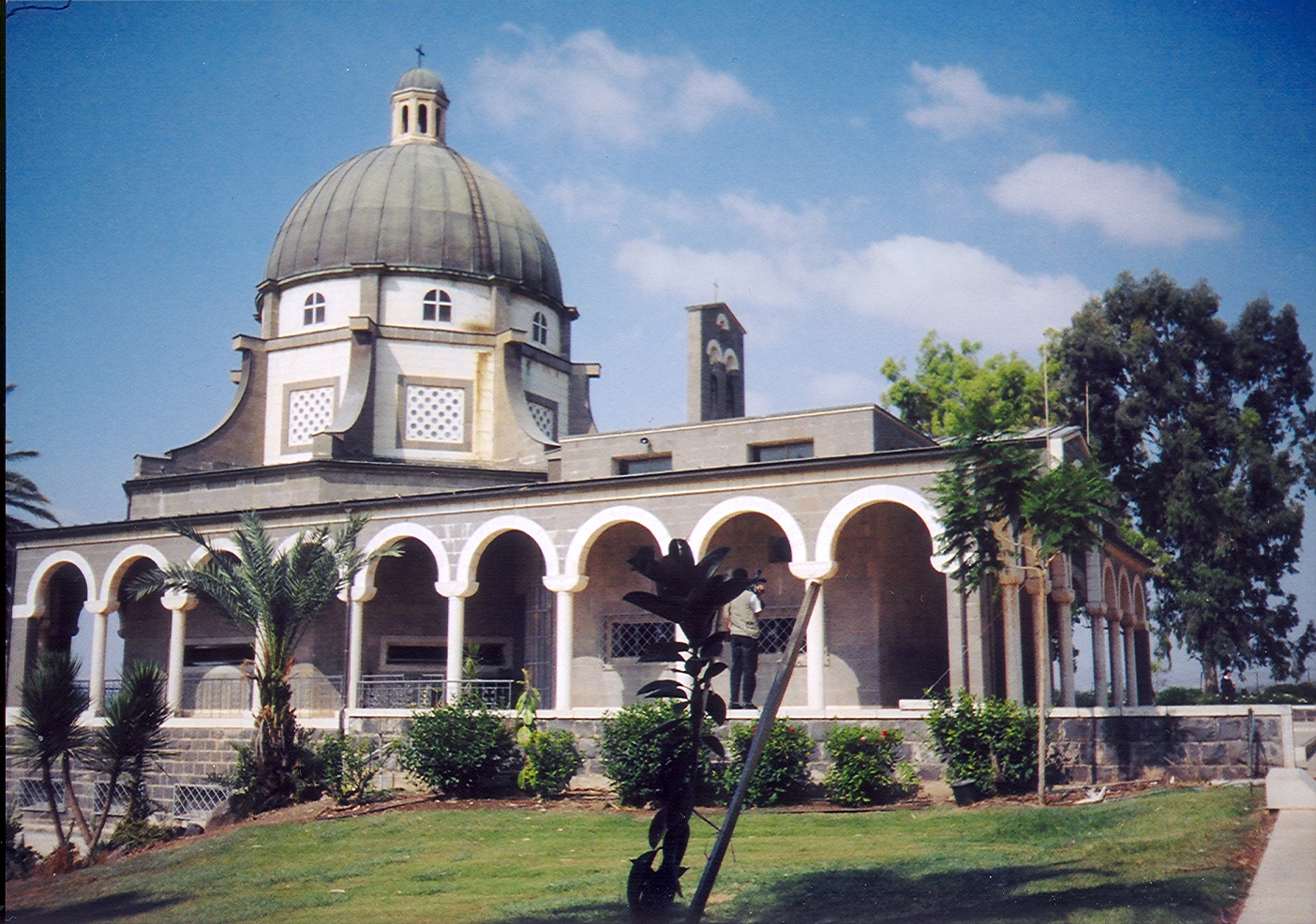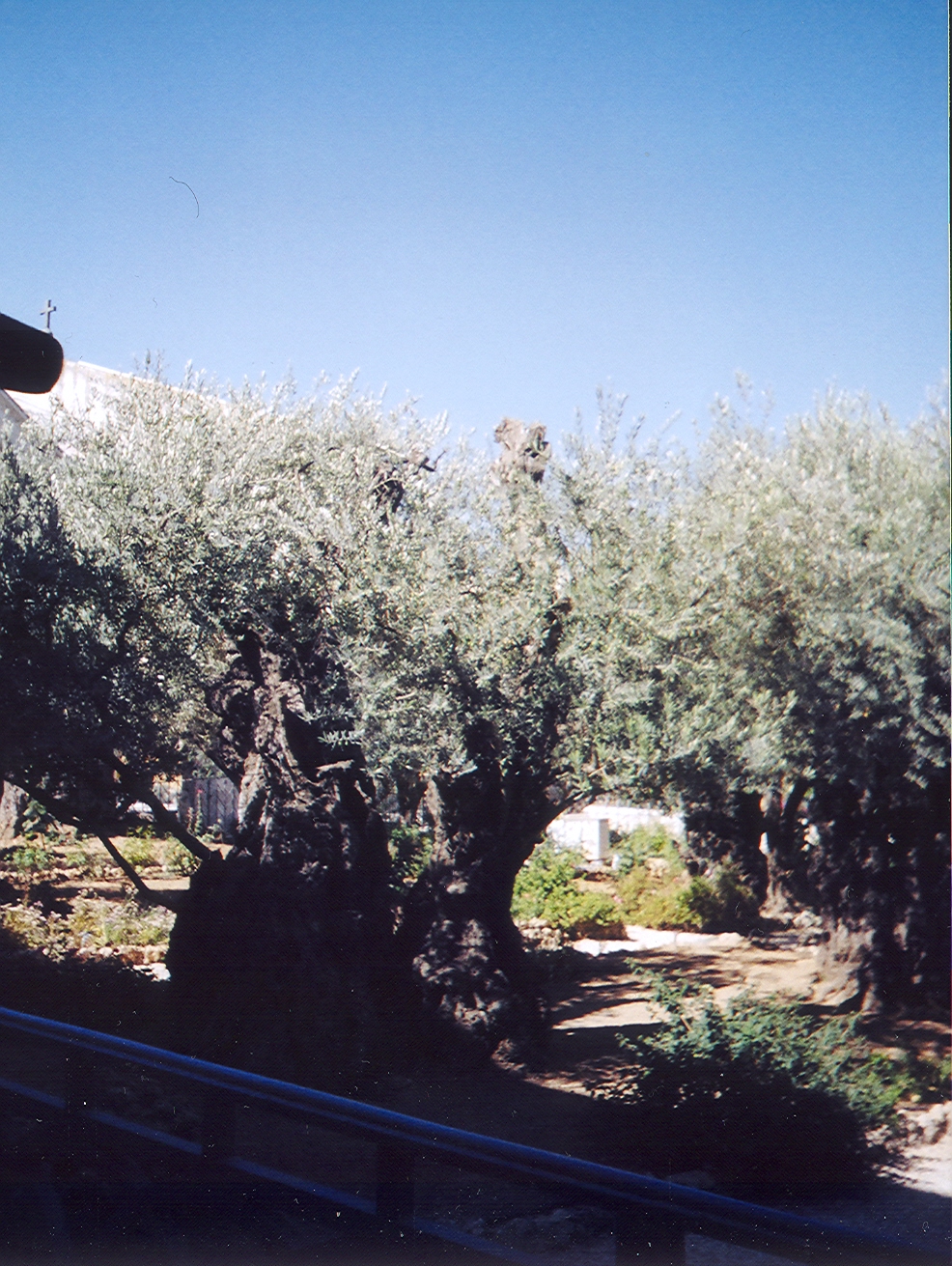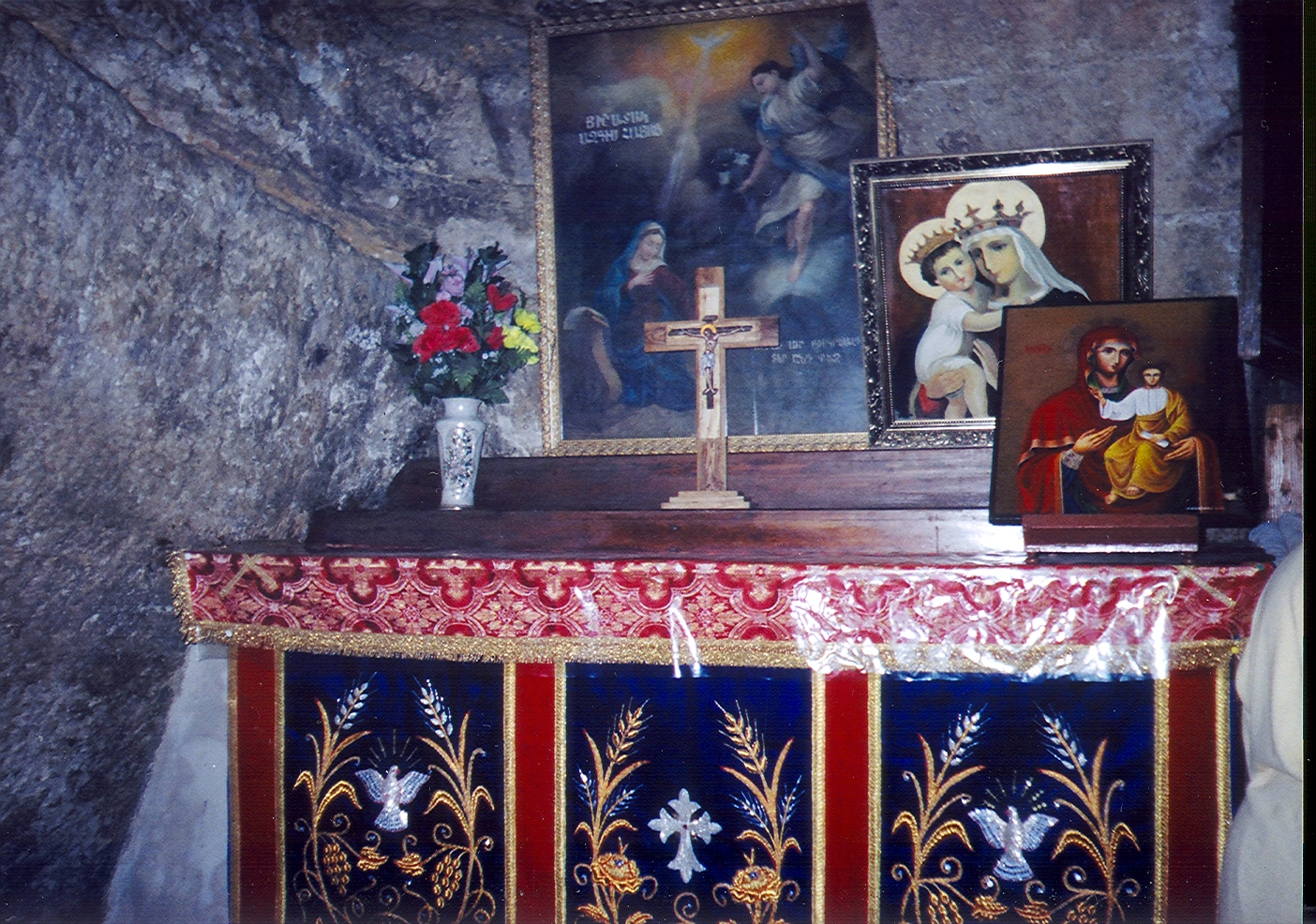

Mount of Beatitudes
Pictures: Fr. Tomás-2004
 The Mount of the Beatitudes is usually considered to be the most strikingly
beautiful and serene of the Christian holy places in the country. Additionally,
this site has managed to escape much of the commercialism of modern Israel.
Tradition places three of the New Testament's most significant episodes here:
the Sermon on the Mount, the Multiplication of the Loaves and Fishes and Jesus'
post-Resurrection appearance where he conferred the leadership of the church on
Peter.
The Mount of the Beatitudes is usually considered to be the most strikingly
beautiful and serene of the Christian holy places in the country. Additionally,
this site has managed to escape much of the commercialism of modern Israel.
Tradition places three of the New Testament's most significant episodes here:
the Sermon on the Mount, the Multiplication of the Loaves and Fishes and Jesus'
post-Resurrection appearance where he conferred the leadership of the church on
Peter.
This name is given to the place
where Our Saviour delivered the "Sermon on the Mount", beginning with the
Beatitudes. The scene of this discourse is traditionally located on Karn Hattin
(or Kurun Hattîn), the Horns of Hattin, a mountain which receives its name from
the little village at its northern base and from the two cones or horns which
crown its summit. This mountain, rising above the hills that skirt the lake, is
the only height to the west that can be seen from its shores. It consists of a
low ridge about one-quarter of a mile long extending east and west, and rising
at each extremity into a cone or horn. The horn, which is the taller, is only
sixty feet above the ridge. Between the horns lies an uneven platform which
could easily accomodate the c rowd that followed Jesus; but it is believed that
the spot on which the discourse was given is lower down, on a level place on the
southern side of the mountain, corresponding with St. Luke's description (topou
pedinou), vi. 17, which may mean a level place, as well as a "plain". From the
eastern slope of the hill there is a beautiful view, to the east, of the lake
with the Jôlan (Gaulanitis) mountains beyond, to the south, the plateau of Ard
el-Hamma and Mt. Tabor, and to the north the snowy height of Mt. Hermon. The
tradition that there was a village on the mountain top, if true (the only proof
being the remains of a wall which served as defense to a camp), might lend point
to the reference in the sermon to the city which was seated on a hill and could
not be hid (Matt., v, 14); and the beautiful flowers that abound there might
include the unindentified "lilies of the field". The Horns of Hattin are
mentioned by a feeble and late tradition as the site of the second
multiplication of loaves. The Jews of the locality point out here also the tomb
of Jethro, father-in-law of Moses.
rowd that followed Jesus; but it is believed that
the spot on which the discourse was given is lower down, on a level place on the
southern side of the mountain, corresponding with St. Luke's description (topou
pedinou), vi. 17, which may mean a level place, as well as a "plain". From the
eastern slope of the hill there is a beautiful view, to the east, of the lake
with the Jôlan (Gaulanitis) mountains beyond, to the south, the plateau of Ard
el-Hamma and Mt. Tabor, and to the north the snowy height of Mt. Hermon. The
tradition that there was a village on the mountain top, if true (the only proof
being the remains of a wall which served as defense to a camp), might lend point
to the reference in the sermon to the city which was seated on a hill and could
not be hid (Matt., v, 14); and the beautiful flowers that abound there might
include the unindentified "lilies of the field". The Horns of Hattin are
mentioned by a feeble and late tradition as the site of the second
multiplication of loaves. The Jews of the locality point out here also the tomb
of Jethro, father-in-law of Moses.
The tradition regarding the scene of the Sermon on the Mount, though usually
received with a certain degree of favor by Scriptural scholars, apparently does
not go back beyond the crusaders. St. Jerome, the best informed man of his day
on points of this nature, knew of no such tradition and merely conjectured that
the scene was on Mt. Tabor or some other high mountain of Galilee. The Gospels,
in fact, afford but little help in determining the site. Matt., v, 1, locates
the sermon on the mountain (to oros), and Luke, 12, uses the same expression for
the spot from which Our Lord descended before He preached on the "level place".
The expression most naturally "suggests that the sermon had long been
traditionally connected with a mountain and seems to mean the mountain on which
the sermon was delivered.
(picture of Beatitudes central location0
The suggestion of this hill for the location of the Sermon on the Mount is a
good one. Once known as Mt. Eremos, this hill is located betwee n Capernaum and Tabgha and is just above the "Cove of the Sower." This spacious hillside
provides much room
n Capernaum and Tabgha and is just above the "Cove of the Sower." This spacious hillside
provides much room
The mountain is topped by a Catholic chapel built in 1939 by the Franciscan Sisters with the support of the Italian ruler Mussolini. Owned by the Franciscans, whose nuns live in the adjacent convent, the church's octagonal shape depicts the eight beatitudes (Matthew 5:3-10). The seven virtues (justice, charity, prudence, faith, fortitude, hope and temperance) are also depicted by symbols in the pavement around the altar. From the gallery you have some of the best views of the lake, especially towards Tiberias to the south. Capernaum and the red domes of the Greek Orthodox monastery beyond can be seen to the east. The building was constructed by the noted architect Antonio Barluzzi and is full of numerical symbolism. In front of the church, the symbols on the pavement represent Justice, Prudence, Fortitude, Charity, Faith and Temperance. Inside the church hangs the cloak from Pope Paul IV's visit in 1964
Holy Land Greece Pilgrimages Pilgrimages Map Index Español English Index